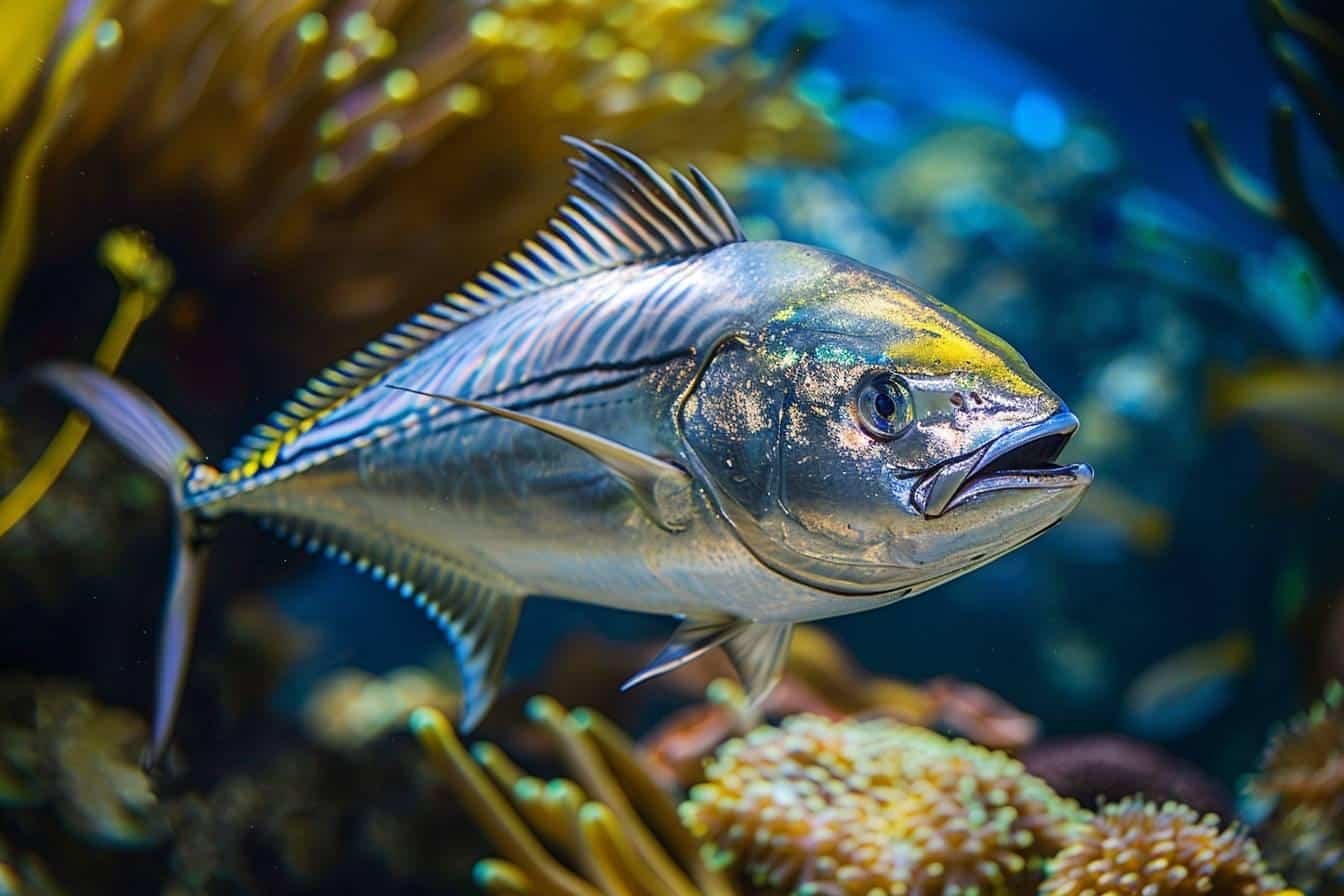The article in brief
Sparus aurata, or gilthead sea bream, is a captivating fish from the Mediterranean and Eastern Atlantic. Let's discover its characteristics:
- Body silver oval with a domed head with gilded headband
- Protandrous hermaphroditism Born male, becomes female around 3 years old
- Varied habitat : coastal areas, lagoons, estuaries
- Importance ecological and economical fishing and intensive aquaculture
- Challenges conservation linked to overfishing and global warming
La Sparus auratamore commonly known as gilthead sea bream, is a fascinating fish that I have been lucky enough to observe at close quarters over the course of my career. Let me take you on a journey of discovery of this emblematic species of the Mediterranean and Eastern Atlantic. As a keen aquarist, I'm always amazed by the beauty and adaptability of this fish.
Characteristics and morphology of gilthead bream
La Sparus aurata is a true jewel of the seas. Its oval, laterally compressed body has a magnificent silvery-grey hue that sparkles in the sunlight. What has always struck me about this species is its domed head adorned with a golden forehead band, a veritable natural crown that earns it its royal nickname.
Here are some of the main characteristics of sea bream:
- Average height: 50 cm
- Maximum size: 70 cm
- Weight: Up to 5 kg for the largest specimens
- Longevity: Up to 25 years
One detail that never fails to attract attention is the large black spot on the operculum. It's as if nature wanted to add a touch of elegance to this already majestic fish. Its thick lips give it an almost comical expression, I must admit.
A species with many names
La Sparus aurata is known by different names in different regions and languages. In France, it is commonly known as sea bream or gilthead bream. Our English-speaking neighbours call it "Gilthead seabream", while Italians affectionately refer to it as "Orata". This diversity of names testifies to its popularity throughout the Mediterranean basin and beyond.
Classification and biological characteristics
From a scientific point of view, the gilthead bream belongs to the Sparidae family and the Perciformes order. What makes this species particularly interesting is its protandrous hermaphroditism. In fact, the Sparus aurata is born male and changes sex at around 3 years of age to become female. It's a phenomenon I've always found fascinating, and a perfect illustration of nature's incredible adaptability.
Habitat and behaviour of Sparus aurata
As a pet shop floor manager, I've often had the opportunity to explain to customers the specific habitat requirements of gilthead bream. This species is mainly found in the Mediterranean, the Black Sea and the eastern Atlantic, from the British Isles to Cape Verde. Its adaptability is remarkable, as it frequents coastal areas as well as lagoons and estuaries.
A coastal fish par excellence
Sea bream is particularly fond of :
- Seagrass beds
- Sandy bottoms
- Shallow waters (1 to 150 metres)
I've been lucky enough to observe these fish in their natural environment during dives, and I can assure you that it's a magnificent sight to see them evolving gracefully in the Posidonia meadows.
Lifestyle and diet
La Sparus aurata is a social fish that generally lives alone or in small groups. It is particularly active at dusk and dawn, the ideal times for hunting. Speaking of hunting, the gilthead bream is a voracious carnivore. Its diet consists mainly of :
| Type of prey | Examples |
|---|---|
| Molluscs | Mussels, clams |
| Crustaceans | Crabs, prawns |
| Echinoderms | Sea urchins |
| Fish | Small fish |
I remember an amusing anecdote: one day, while cleaning an exhibition aquarium, I saw a sea bream attacking relentlessly a sea urchin that we had just introduced. It ended up breaking and devouring it in a matter of minutes, demonstrating the power of its jaws!

Ecological and economic importance
La Sparus aurata plays a crucial role in the marine ecosystem, but it is also of great economic importance. As a lover of marine life, I'm always torn between amazement at this species and awareness of the issues involved in preserving it.
Fisheries and aquaculture
Sea bream is highly prized for its delicate flesh. It is intensively fished, but there is also significant aquaculture production, particularly in the Mediterranean. Aquaculture of Sparus aurata has grown considerably over the last few decades, making it possible to meet growing demand while relieving the pressure on wild populations.
Here are some interesting figures on sea bream production:
- Global production: Over 200,000 tonnes per year
- Main producing countries: Greece, Turkey, Spain
- Minimum catch size: 20 cm (EU), 23 cm (recreational fishing in France)
Conservation challenges
Despite its popularity in aquaculture, the Sparus aurata is facing conservation challenges. Overfishing and the degradation of its natural habitat, particularly seagrass beds, are threatening wild populations. As a professional aquarist, I regularly raise my customers' awareness of the importance of preserving these fragile marine ecosystems.
An interesting feature of the gilthead sea bream is its sensitivity to temperature variations. Although it is eurythermic (capable of withstanding large variations in temperature), it avoids waters above 28°C and will not tolerate temperatures above 35°C. With global warming, this characteristic could have a significant impact on its future distribution.
A future to preserve
La Sparus aurata is much more than just a fish. It embodies the beauty and complexity of Mediterranean marine ecosystems. Its fascinating life cycle, from male to female, reminds us of the diversity of reproductive strategies in the animal world.
As a passionate professional, I can only encourage a responsible approach to sea bream fishing and aquaculture. It is essential to strike a balance between exploitation and conservation to ensure the long-term survival of this emblematic species.
If you are lucky enough to spot a Sparus aurataWhether in a public aquarium or on a dive, take the time to admire their grace and beauty. And don't forget: each and every one of us has a role to play in preserving these wonders of nature for future generations.
To find out more about marine fish farming, take a look at these resources:
